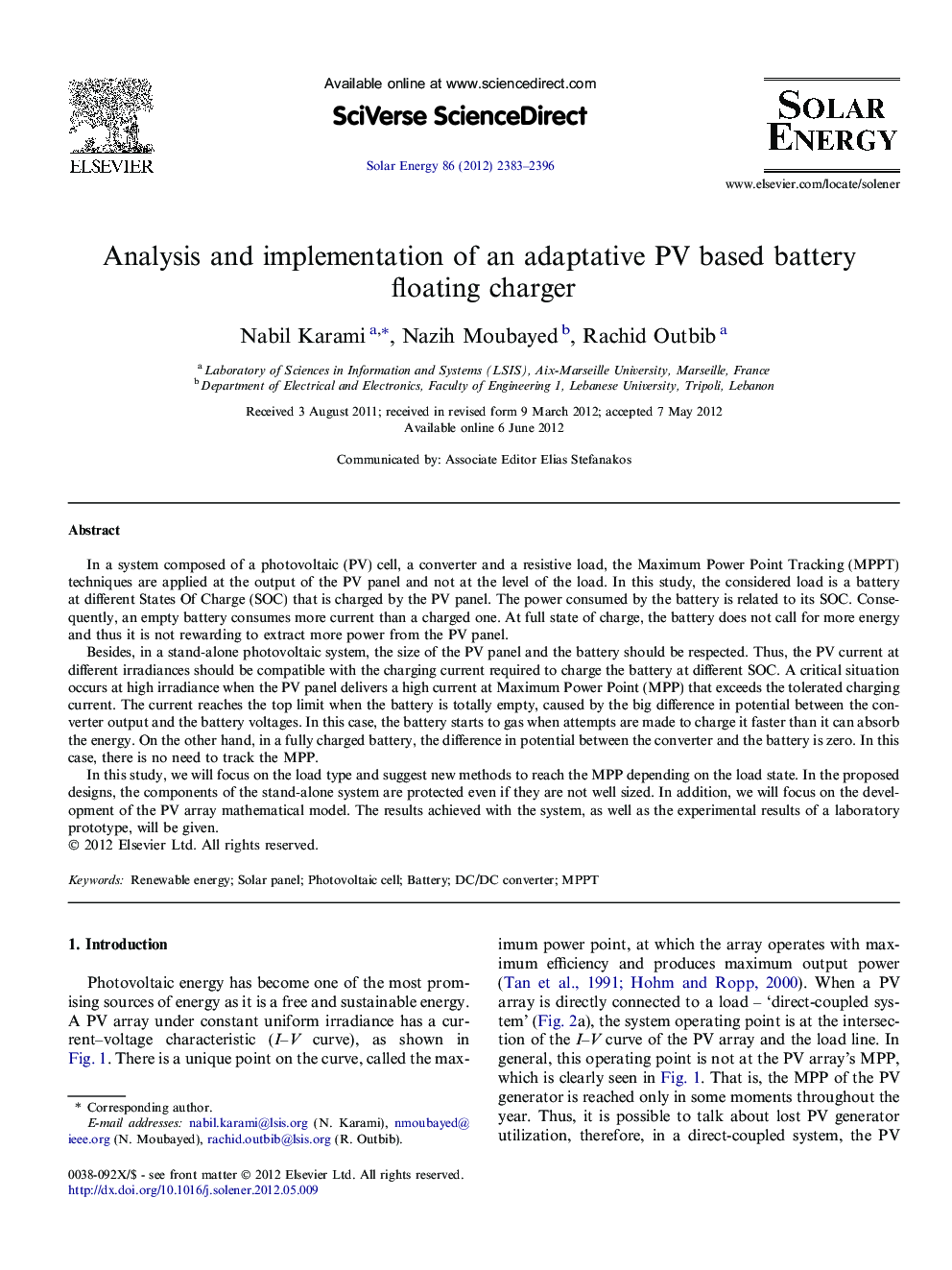| کد مقاله | کد نشریه | سال انتشار | مقاله انگلیسی | نسخه تمام متن |
|---|---|---|---|---|
| 1550891 | 998111 | 2012 | 14 صفحه PDF | دانلود رایگان |

In a system composed of a photovoltaic (PV) cell, a converter and a resistive load, the Maximum Power Point Tracking (MPPT) techniques are applied at the output of the PV panel and not at the level of the load. In this study, the considered load is a battery at different States Of Charge (SOC) that is charged by the PV panel. The power consumed by the battery is related to its SOC. Consequently, an empty battery consumes more current than a charged one. At full state of charge, the battery does not call for more energy and thus it is not rewarding to extract more power from the PV panel.Besides, in a stand-alone photovoltaic system, the size of the PV panel and the battery should be respected. Thus, the PV current at different irradiances should be compatible with the charging current required to charge the battery at different SOC. A critical situation occurs at high irradiance when the PV panel delivers a high current at Maximum Power Point (MPP) that exceeds the tolerated charging current. The current reaches the top limit when the battery is totally empty, caused by the big difference in potential between the converter output and the battery voltages. In this case, the battery starts to gas when attempts are made to charge it faster than it can absorb the energy. On the other hand, in a fully charged battery, the difference in potential between the converter and the battery is zero. In this case, there is no need to track the MPP.In this study, we will focus on the load type and suggest new methods to reach the MPP depending on the load state. In the proposed designs, the components of the stand-alone system are protected even if they are not well sized. In addition, we will focus on the development of the PV array mathematical model. The results achieved with the system, as well as the experimental results of a laboratory prototype, will be given.
► We will focus on the types of load and suggest news methods in reaching the MPP depending on the load.
► We will focus on the mathematical modeling development of the PV array.
► The performance results of the system are given.
► Experimental results are presented for a laboratory prototype.
Journal: Solar Energy - Volume 86, Issue 9, September 2012, Pages 2383–2396